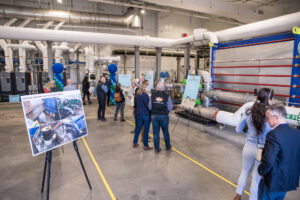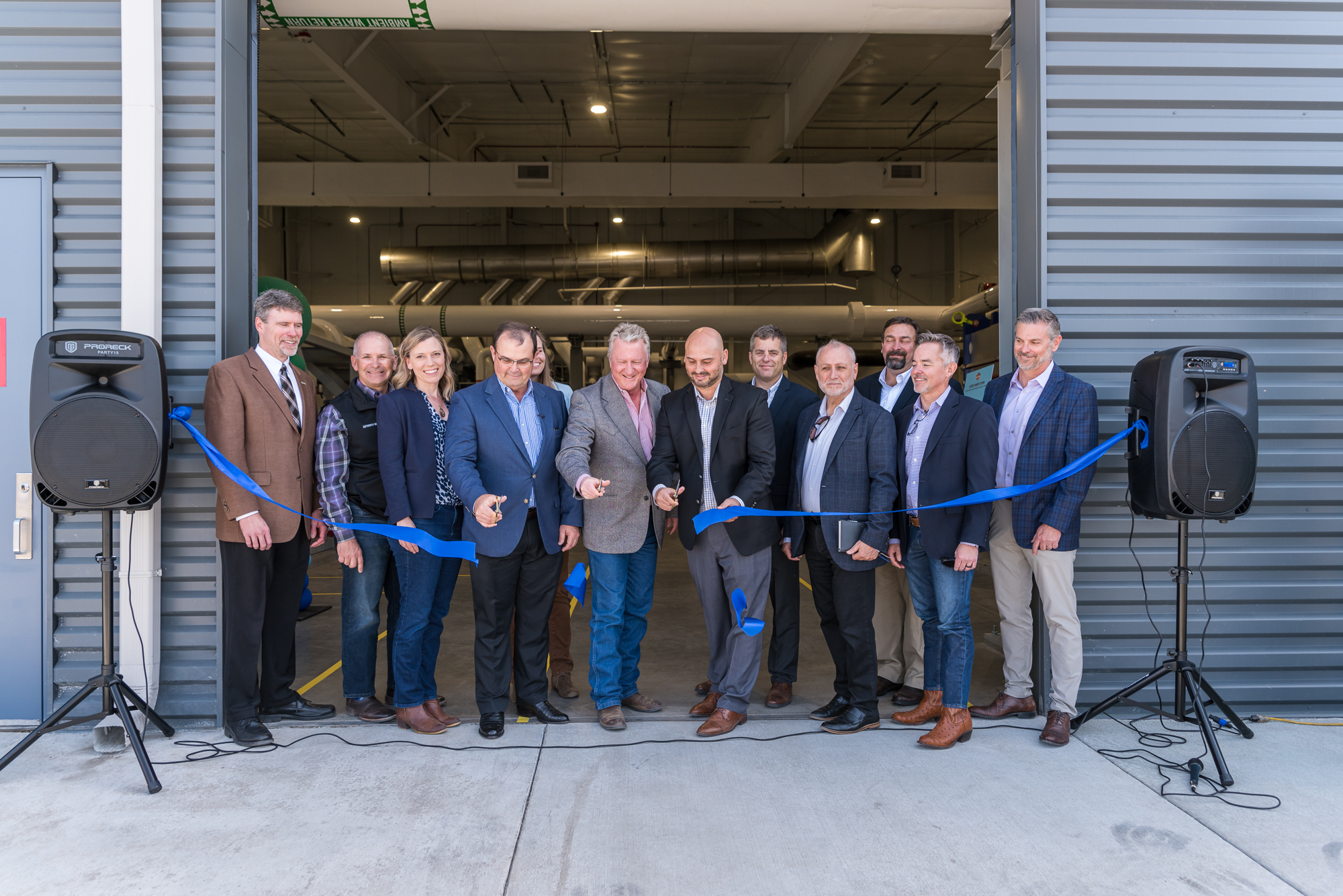The National Western Center (NWC) and its partner EAS Energy Partners (EAS) today held a ribbon-cutting event to celebrate the completion of the largest wastewater heat recovery system in the United States. The NWC campus will source nearly 90 percent of its heating and cooling from a recycled source of thermal energy — a sewer pipeline that runs through the site — rather than burning fossil fuels.
“We made a promise to be at the forefront of sustainability, and we’re delivering,” National Western Center CEO Brad Buchanan said. “Knowing we have to heat and cool our buildings one way or another, we chose an innovative, clean-energy system that’s both beneficial for our campus but also for our community.”

Used water that goes down the drains of our showers, sinks, bathtubs, dishwashers, washing machines and toilets travels through a main sewer pipeline. Within the NWC’s wastewater heat recovery system, a plate and frame heat exchanger captures the warmth of that wastewater and transfers it to a clean water distribution pipe. The system is housed in an 8,790-square-foot central utility plant (CUP) constructed of a pre-engineered metal building. The distribution pipe enters individual buildings using a closed-loop system (clean water never touches wastewater) and harnesses the energy from the system to heat and cool the buildings.
The system was designed, built and will be operated by EAS Energy Partners (EAS), through an agreement with the National Western Center. EAS is comprised of CenTrio, the largest core-competency district energy operator in the United States, AECOM Technical Services Inc., and Colorado-based Saunders Construction. The system is being delivered at a cost comparable to traditional natural gas systems but is low carbon, consistent and sustainable.
“The leadership from all the partners helped bring about the largest sewer heat recovery system in the United States and demonstrates the sustainability success we can have when we work together to create and deliver innovative, affordable and reliable energy solutions to our customers. EAS is excited about this milestone in the project as the district comes on-line. CenTrio is looking forward to its continued partnership with the National Western Center Authority as we integrate this asset into our operations and become a trusted partner to the community.”
Reducing fossil fuel use means reducing air pollution and associated health impacts. To build the system, the City and County of Denver’s construction team had to bury the 72-inch wastewater pipeline that once ran alongside the South Platte River, alleviating its odors and opening up recreational space for people to enjoy.
“The District Energy System exemplifies the city’s commitment to innovation, sustainability, and resiliency. This system will serve as a model for other cities and help to educate and promote clean energy solutions,” said Tykus Holloway, executive director for the Mayor’s Office of the National Western Center/City and County of Denver.
Seven buildings will use the system initially, with capacity to expand over time. They include three owned by the City and County of Denver, three buildings comprising the CSU Spur campus, and the National Western Stock Show’s Legacy Building. The National Western Center Authority, which operates the campus, will pay for the system over 40 years with event revenue and monthly energy bills from system users. The system is being delivered at a cost comparable in the long run to traditional natural gas systems, with grant support from the Metro Wastewater Reclamation District and the Denver Department of Public Health and Environment.









